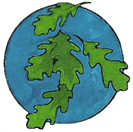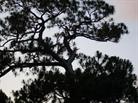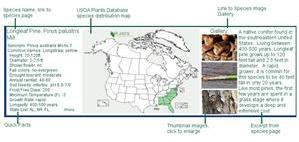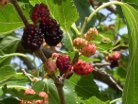

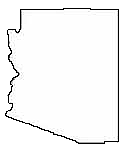

Arizona
The Grand Canyon State, 'God Enriches'

-Color denotes a tree that is rare or endangered

Want to add your tree to our picture gallery? Click here for details!
Arizona's landscape allows for plant
species that run the gamut from true desert species
in the south, to high altitude fir and pine trees in the
north. There are mountains, deserts, canyons,
valleys, plateaus, prairies and rivers, each with their
own collection of tree species. Arizona is home to 6
national forests such as the Apache-Sitgreaves
National Forests, an oasis in the arid southeast and
home to more lakes and rivers than in any other
Southwestern National Forest. Another national
forest, Tonto National Forest, is the fifth largest


™

Native Trees of Arizona
We are part of the Hubpages community.
Click here for more info.
Click here for more info.

Custom Search

Tree lists:
•A-Z by scientific
name
•A-Z by common
name
•By Family
For state A-Z list click state name below.
•A-Z by scientific
name
•A-Z by common
name
•By Family
For state A-Z list click state name below.
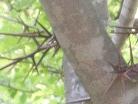
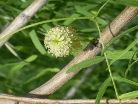
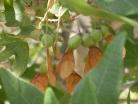
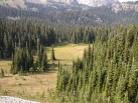
Arizona Tree Facts

Forested acres: 4 million
Percent of land forested: 27%
Number of Tree city USA communities: 22
Number of invasive tree species: 32- hardwood, 1 palm
Notable invasive insect pest (to trees): Spruce Aphid
Number of tree families in our collection: 20
Number of endangered or threatened species in our collection: 0
Sources:
Arizona State Forestry Division, 2013.
Hardwood Forest Foundation: Experience Arizona
Additional state resources:
Field Guide to Insect and Diseases of Arizona and New Mexico Forests
Arizona Community Tree Council
Percent of land forested: 27%
Number of Tree city USA communities: 22
Number of invasive tree species: 32- hardwood, 1 palm
Notable invasive insect pest (to trees): Spruce Aphid
Number of tree families in our collection: 20
Number of endangered or threatened species in our collection: 0
Sources:
Arizona State Forestry Division, 2013.
Hardwood Forest Foundation: Experience Arizona
Additional state resources:
Field Guide to Insect and Diseases of Arizona and New Mexico Forests
Arizona Community Tree Council
Follow the links to view species native to Arizona. If the genus is not linked, species are listed on the family page.
Aceraceae, Maple
Anacardiaceae, Sumac
Rhus, Sumac
Arecaceae, Palm
Washingtonia, Fan Palm
Betulaceae, Birch
Alnus, Alder
Bignoniaceae, Trumpet Creeper
Chilopsis, Desert Willow
Caprifoliaceae, Honeysuckle
Sambucus, Elderberry
Cupressaceae- Cypress
Juniperus, Juniper
Hesperocyparis, Western Cedar
Aceraceae, Maple
Anacardiaceae, Sumac
Rhus, Sumac
Arecaceae, Palm
Washingtonia, Fan Palm
Betulaceae, Birch
Alnus, Alder
Bignoniaceae, Trumpet Creeper
Chilopsis, Desert Willow
Caprifoliaceae, Honeysuckle
Sambucus, Elderberry
Cupressaceae- Cypress
Juniperus, Juniper
Hesperocyparis, Western Cedar
Arizona Tree Families and Genera

click to enlarge.
Useful information while browsing species:
• How to read a botanical name
• How to use our species boxes:
• How to read a botanical name
• How to use our species boxes:
-Color denotes a tree that is rare or endangered

Please note: This is not a complete list of all native tree families and species found in Arizona. We are constantly working towards a more comprehensive list and will add families and their species as completed.
Additional Resources:
North American Native Tree Families
North American A to Z List by Scientific Name
North American A to Z List by Common Name
North American Native Tree Families
North American A to Z List by Scientific Name
North American A to Z List by Common Name
Fagaceae, Beech
Quercus, Oak
Juglandaceae, Walnut
Juglans, Walnut
Moraceae, Mulberry
Morus, Mulberry
Oleaceae, Olive Family
Pinaceae, Pine
Abies, Fir
Picea, Spruce
Pinus, Pine
Pseudotsuga, Douglas-Fir
Quercus, Oak
Juglandaceae, Walnut
Juglans, Walnut
Moraceae, Mulberry
Morus, Mulberry
Oleaceae, Olive Family
Pinaceae, Pine
Abies, Fir
Picea, Spruce
Pinus, Pine
Pseudotsuga, Douglas-Fir
Rubiaceae, Madder
Rutaceae, Rue
Salicaceae, Willow
Populus, Cottonwood
Salix, Willow
Sapindaceae, Soapberry
Sapotaceae, Sapodilla
Ulmaceae, Elm
Celtis, Hackberry
Ulmus, Elm
Yucca, Yucca
Rutaceae, Rue
Salicaceae, Willow
Populus, Cottonwood
Salix, Willow
Sapindaceae, Soapberry
Sapotaceae, Sapodilla
Ulmaceae, Elm
Celtis, Hackberry
Ulmus, Elm
Yucca, Yucca
Looking for a nursery near you?
Check out our nursery listing by county below!
Sorry, we do not currently have any tree nursery listings for this state. We do update these lists, so please check back.
Check out our nursery listing by county below!
Sorry, we do not currently have any tree nursery listings for this state. We do update these lists, so please check back.
Arizona Endangered or Threatened Tree Species

This is not a comprehensive list but we are always working on adding more and will update accordingly.
Arizona Cliffrose- Purshia subintegra Shrub, Endangered
Arizona Willow- Salix arizonica Shrub, Conservation Agreement
Sources:
Arizona Ecological Services Fish and Wildlife Services (statewide species list October 2012)
Arizona Cliffrose- Purshia subintegra Shrub, Endangered
Arizona Willow- Salix arizonica Shrub, Conservation Agreement
Sources:
Arizona Ecological Services Fish and Wildlife Services (statewide species list October 2012)


State Tree: Blue Palo Verde
forest in the United States and contains 21 threatened or endangered wildlife species.
Arizona is also home to such wonders as the Sky Islands, where the end of the ice age left pockets of plants behind. Ponderosa pine, quaking aspen, fir, and spruce trees are the hallmark trees of the high elevation forests. Pinyon and Juniper are common species as well, adding year round greenery and the bonus of harvesting pine nuts and juniper berries. There are flowering trees such as palo verdes and desert willows, and thorny trees like honeylocust and mesquite, dotting the landscapes and adding splashes of spring color and caution for the curious. Arizona has a diverse natural beauty and a dazzling array of flora and fauna surely to enchant anyone from the casual hiker to the eco-tourist. You can marvel at the towering petrified forest, go skiing the next day and round the weekend out by fishing for trout on one of the many beautiful lakes. In Arizona, it is easy to find a place to get away from it all and settle into relaxation and discovery.
Arizona is also home to such wonders as the Sky Islands, where the end of the ice age left pockets of plants behind. Ponderosa pine, quaking aspen, fir, and spruce trees are the hallmark trees of the high elevation forests. Pinyon and Juniper are common species as well, adding year round greenery and the bonus of harvesting pine nuts and juniper berries. There are flowering trees such as palo verdes and desert willows, and thorny trees like honeylocust and mesquite, dotting the landscapes and adding splashes of spring color and caution for the curious. Arizona has a diverse natural beauty and a dazzling array of flora and fauna surely to enchant anyone from the casual hiker to the eco-tourist. You can marvel at the towering petrified forest, go skiing the next day and round the weekend out by fishing for trout on one of the many beautiful lakes. In Arizona, it is easy to find a place to get away from it all and settle into relaxation and discovery.
Blue Palo Verde, Parkinsonia florida, was named the state tree in 1954. Palo verde means green stem or bark, which is a tell tale feature of this species. It is a fast growing tree, is leafless most the year, and is aided in photosynthesis by the green bark. Blue Palo Verde also has smooth green branches.
In the spring, Blue Palo Verde erupts with small bright yellow flowers that seem to cover the entire crown. Like all members of the pea family, Blue Palo Verde trees have long, somewhat flat, yellowish brown seed pods which fall when ripe. They are then eaten by wildlife and dispersed. The leaves are bi-pinnately compound with 2 to 3 pairs of .5 inch long leaflets on each pinnae and have a delicate feathery appearance similar to acacia or mesquite trees.
Blue Palo Verde is one of the few tree species found in the Sonoran Desert amidst the Giant Saguaro cactus forest. It is capable of enduring temperatures over 100°F for long periods and minimal precipitation. It makes an excellent xeric landscape species.
The fruits of this native species are edible. Native Americans, specifically the Pima and Papago peoples, cooked young fruits and seeds and made porridge from ground seeds.
Learn More
In the spring, Blue Palo Verde erupts with small bright yellow flowers that seem to cover the entire crown. Like all members of the pea family, Blue Palo Verde trees have long, somewhat flat, yellowish brown seed pods which fall when ripe. They are then eaten by wildlife and dispersed. The leaves are bi-pinnately compound with 2 to 3 pairs of .5 inch long leaflets on each pinnae and have a delicate feathery appearance similar to acacia or mesquite trees.
Blue Palo Verde is one of the few tree species found in the Sonoran Desert amidst the Giant Saguaro cactus forest. It is capable of enduring temperatures over 100°F for long periods and minimal precipitation. It makes an excellent xeric landscape species.
The fruits of this native species are edible. Native Americans, specifically the Pima and Papago peoples, cooked young fruits and seeds and made porridge from ground seeds.
Learn More
Ericaceae, Heath
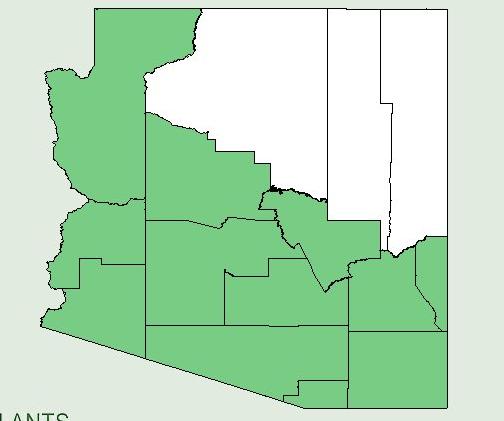
Native distribution of Parkinsonia florida
Map courtesy USDA PLANTS Database
Map courtesy USDA PLANTS Database
- Trees
- A-Z scientific
- A-Z by Common Name
- Families
- Aceraceae Maple Family
- Anacardiaceae Sumac Family
- Annonaceae Custard Apple Family
- Aquifoliaceae Holly Family
- Arecaceae, Palm Family
- Betulaceae Birch family
- Bignoniaceae Trumpet Creeper Family
- Burseraceae Frankincense Family
- Caprifoliaceae Honeysuckle Family
- Chrysobalanaceae Coco-plum Family
- Cornaceae Dogwood Family
- Cupressaceae Cypress Family
- Cyrillaceae Cyrilla Family
- Ebenaceae Ebony Family
- Ericaceae Heath Family
- Fabaceae Pea Family
- Fagaceae Beech Family
- Hamamelidaceae Witch Hazel Ffamily
- Hippocastanaceae Horse Chestnut Family
- Juglandaceae Walnut Family
- Lauraceae Laurel Family
- Leitneriaceae Corkwood Family
- Magnoliaceae Magnolia Family
- Meliaceae Mahogany Family
- Moraceae Mulberry Family
- Myricaceae Bayberry Family
- Myrsinaceae Myrsine Family
- Myrtaceae Myrtle Family
- Nyctaginaceae Four Oclock Family
- Olacaceae Olax Family
- Oleaceae Olive Family
- Pinaceae Pine Family
- Platanaceae Plane Tree Family
- Polygonaceae Buckwheat Family
- Rhamnaceae Buckthorn Family
- Rosaceae Rose Family
- Rubiaceae Madder Family
- Rutaceae Rue Family
- Salicaceae Willow Family
- Sapindaceae Soapberry Family
- Sapotaceae Sapodilla Family
- Simaroubaceae Quassia Family
- Styracaceae Storax Family
- Symplocaceae Sweetleaf Family
- Theaceae Tea Family
- Tiliaceae Lindon Family
- Ulmaceae Elm Family
- Taxaceae Yew Family
- Yucca Family
- Browse by State
- Rare or Endangered Species
- Trees_with_Special_Uses
- Tallest and Biggest
- Noxious Weeds
- Causes
- About Us
- Our Stores
Platanaceae, Plane-tree
Platanus, Sycamore
Platanus, Sycamore



